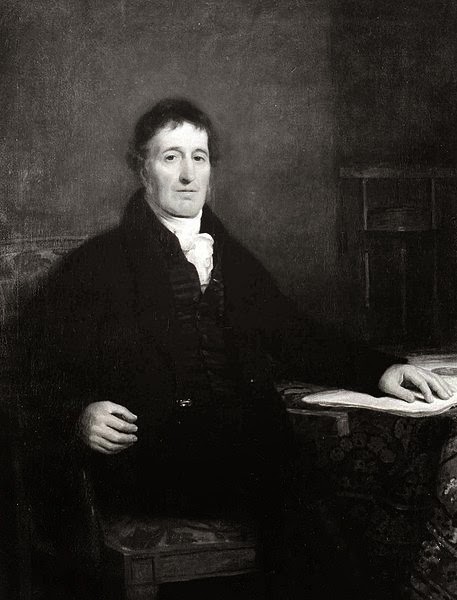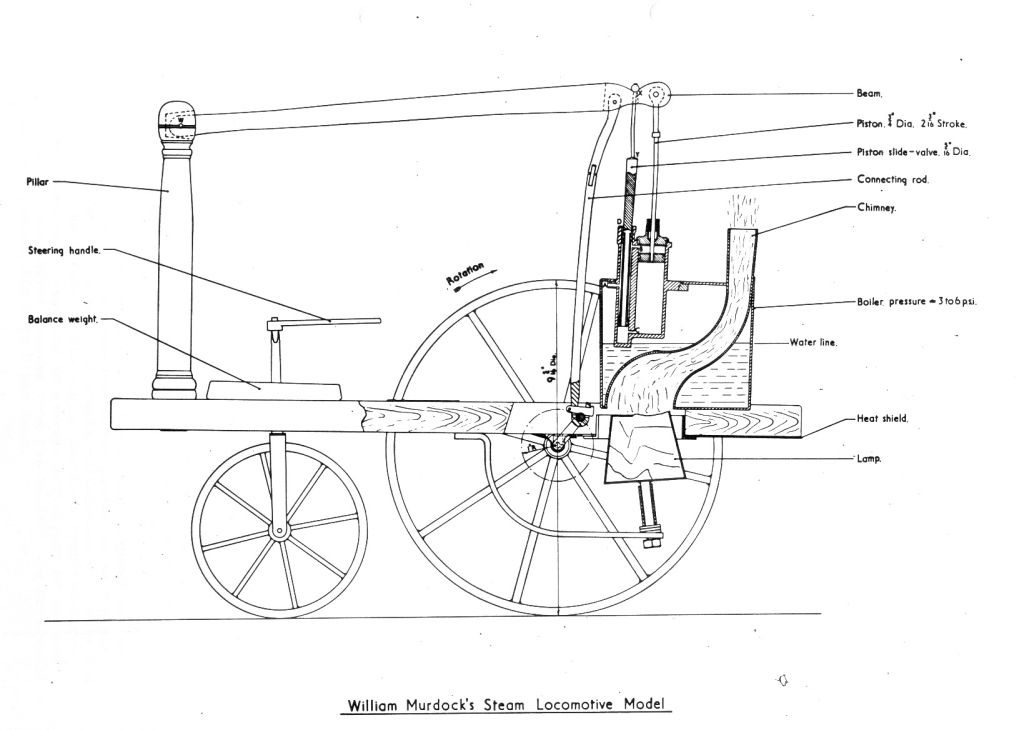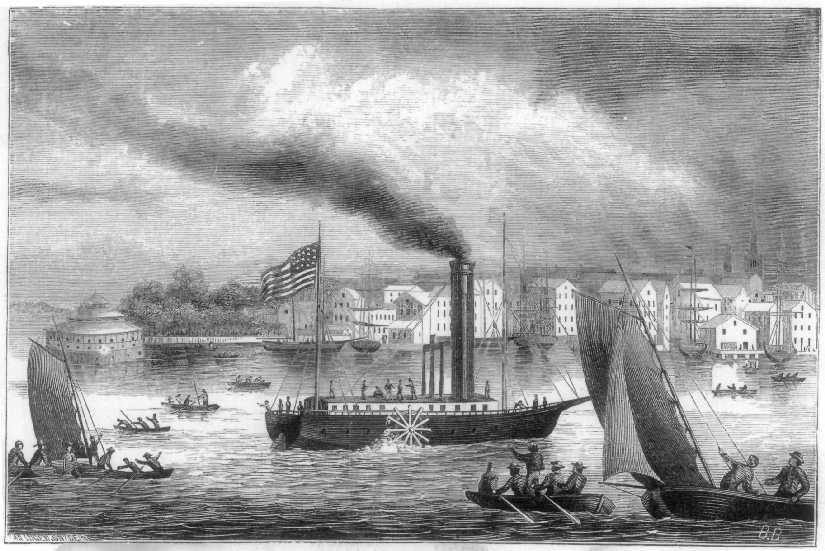
William Murdoch (1754 – 1839)
On August 21, 1754, Scottish engineer and inventor William Murdoch was born. He was the first to make extensive use of coal gas for illumination and a pioneer in the development of steam power.
William Murdoch – Early Years
William Murdoch (sometimes also referred to as Murdock) was born as the third of seven children of the mill tenant and former infantryman John Murdoch in the community of Cumnoch. At the age of ten, he moved to Auchinleck School, where his teacher, the author of a then widespread arithmetic textbook, discovered and promoted his special mathematical talent. From early age he even studied the principles of mechanics and worked much with metal and wood while helping out in his fathers work. It is not quite clear, which achievements Murdoch really made in these years. It is assumed that he built a wooden horse with his father (a three-wheeled bicycle with pedals moved by hand) that he was responsible for the construction of a bridge. Also, it is believed that the young Murdoch performed several experiments with coal gas, but this is not really proven. He got to know James Watt around 1777 and was hired in Birmingham, the epicenter of the fostering industrial revolution, due to his extraordinary abilities.[4]
Improving Steam Engines
Murdoch was soon sent to Cornwall in order to erect and maintain Boulton & Watt engines, which he did perfectly, as Boulton later wrote.[6] However, they were not the only company operating in the Cornwall area and it became soon clear that most of these companies started copying from each other. Murdoch was appointed to undertake some inspections of their competitor’s engines and was sometimes threatened for doing so. But Murdoch also spent a lot of time improving the Boulton & Watt engines and it is known that he discussed some further inventions with his employers. Unfortunately, his contract stated that all inventions he made belonged to the company and therefore, it is not exactly clear, which improvements he made in this period. In 1799, he invented a steam wheel that was a lot more efficient than any of its kind and due to the fact that his contract was amended by then, he was able to file this patent in his own name.
The Road Locomotive
To one of his most important inventions belongs the so called road locomotive in 1784. Nicolas-Joseph Cugnot was already known to have demonstrated a similar device even though it weighted more than 4 tonnes.[5] Murdoch built a working model on his own and on this day there are several accounts from witnesses who “saw the model steam carriage run around Murdoch’s living room in Redruth in 1784“. This model had 3 wheels with the engine and boiler placed between the two larger back wheels. Murdoch performed the first public demonstration in Great Britain, but he never really gained popularity for these achievements.

Murdoch’s steam locomotive model
Gas Lighting
Murdoch’s best-known development is gas lighting. It was based on another observation he made during his work with steam engines: heated coal develops a flammable gas that can be passed through pipes and torched elsewhere. Around 1792 – the eyewitness accounts contradict each other here, and Murdoch’s own records are obviously unknown – Murdoch began experiments with which materials were suitable for the production of flammable gas. Experiments with coal, wood and peat have been documented; Murdoch also researched the quantity of gas produced and its quality. For 1794 there are many reports that Murdoch heated coal in a small retort and conducted the resulting gas through an approximately one meter long iron tube into an old rifle barrel, where he burned it off. In the same year the first experiments with the replacement of candles for interior lighting were carried out in Murdoch’s house in Redrouth, for which he set up a larger retort in the courtyard of his estate and conducted the gases developed there through a small pipeline into his dining room. The pipe had been led through a hole in the window frame and ended under the ceiling above the table. Even a gas-powered hand lantern was developed by Murdoch during this time.
Illuminating the World
He returned to Birmingham in 1798 where he continued his experiments and four years later, he performed a public exhibition of his lighting by illuminating the exterior of the Soho Foundry. Soon, companies like Philips gained their interest in illuminated their factories. Still, it is believed that he never really made much money from his invention, even though soon most towns in Britain were lit by gas. In 1806, the Royal Society awarded him the Rumford Medal for the development of what later became known as city gas and the first commercial application of his discovery.

Clermont illustration – Robert Fulton from Project Gutenberg eText 15161.jpg. Chapter XIII Robert Fulton “Consternation at the sight of Fulton’s monster.”(1870)
Faster Steam Ships
From 1817, however, the company devoted itself with great energy to the development of sea-going steamships. This year, the Caledonia, a paddle-steamer, which initially achieved a cruising speed of 8 mph, after Murdoch’s optimizations of 12 mph (corresponding to about 20 km/h). She won races and crossed the canal to sail up the Rhine from Rotterdam. These successes drew the attention of the British Navy to the propulsion technology. It soon turned out that the Boulton & Watt machines – i.e. Murdoch’s designs – were the most mature. Between 1813 and 1825 the company produced steam boilers for the navy with a total of 3000 horsepower, which corresponds to about 40-60 boilers.
Later Years
In addition to his work for Boulton & Watt, Murdoch devised several other constructs, some of which still exist today in a similar form. For example, in 1815 he developed the first gravity heating system for the Lemmington Spa bathhouse. When he moved into a new house in Handsworth, a suburb of Birmingham, in 1817, he had equipped it with, among other things, a compressed air-operated doorbell and air conditioning. Of course it was lit by gas light. In 1830, at the age of 76, Murdoch ended his partnership with Boulton & Watt. Although at that time he was drawing an annual salary of £1000, i.e. very well earned, his declining health and the company’s poor business forced him to do so.
William Murdoch passed away in Birmingham in 1839 at age 85.
John Merriman, Industrial Revolutions [10]
References and Further Reading:
- [1] William Murdoch in Icons of Invention
- [2] William Murdoch’s steam locomotive at BBC
- [3] Coal Gas Lighting – William Murdoch in Scottish Inventions and Discoveries
- [4] James Watt and the Steam Age Revolution, SciHi Blog
- [5] Nicholas-Joseph Cugnot and the Automobile, SciHi Blog
- [6] Matthew Boulton – Making the Steam Engine Business a Success, SciHi Blog
- [7] William Murdoch at Wikidata
- [8] Chisholm, Hugh, ed. (1911). “Murdoch, William“. Encyclopædia Britannica (11th ed.). Cambridge University Press.
- [9] Oxford Dictionary of National Biography; John C. Griffiths, „Murdoch, William (1754–1839)
- [10] John Merriman, Industrial Revolutions, European Civilization, 1648-1945 (HIST 202), YaleCourses @ youtube
- [11] John Griffiths; The Third Man, the Life and Times of William Murdoch 1754–1839 Illustrated with Black-and-white photographic plates and diagrams with Bibliography and Index; Andre Deutsch; 1992
- [12] Timeline for William Murdoch, via Wikidata






Pingback: Whewell’s Gazette: Year 2, Vol. #06 | Whewell's Ghost